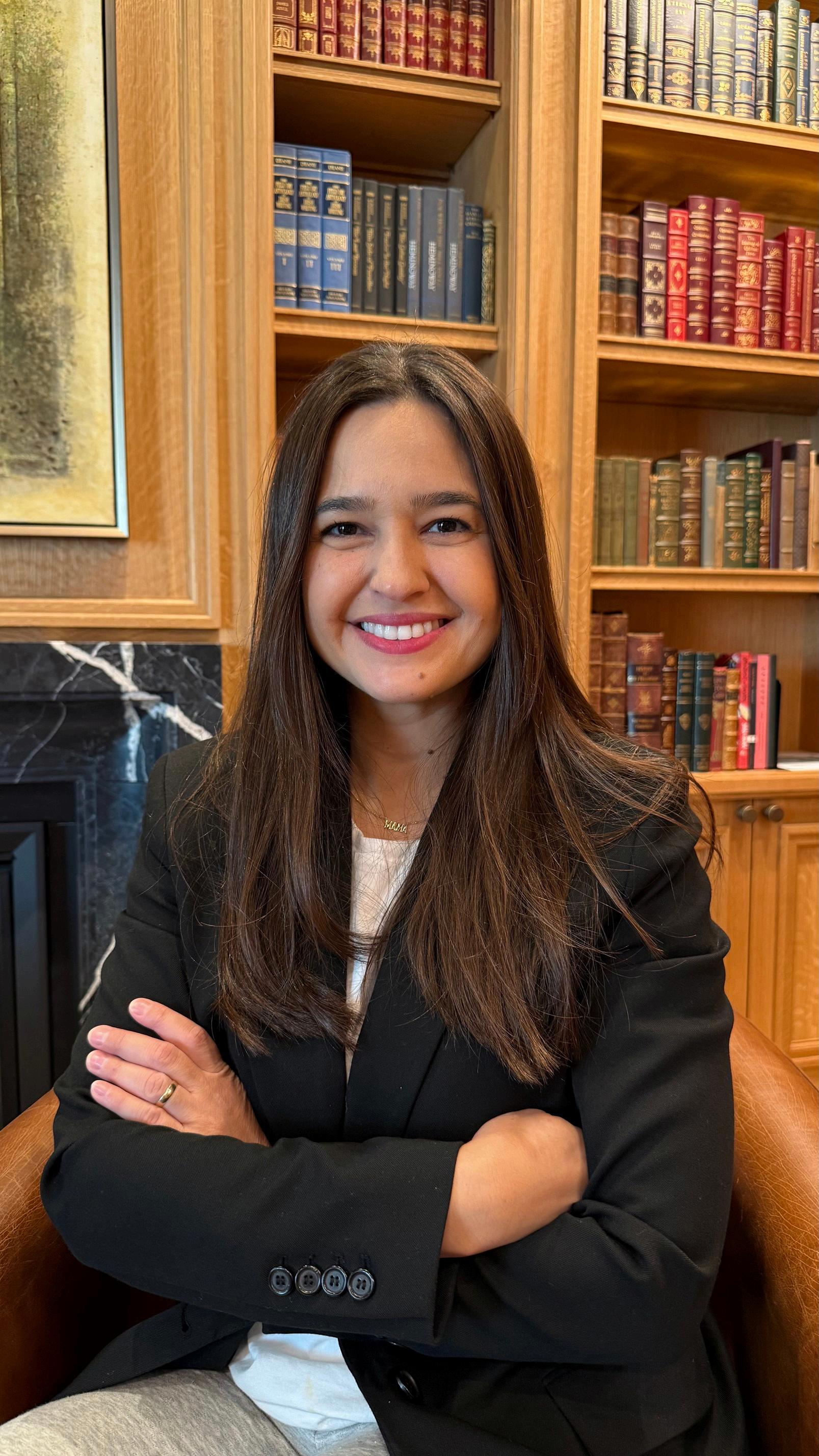




The modern U S workforce is undergoing seismic shifts driven by automation, demographic change, and a growing demand for middle-skill talent At the heart of this transformation lies a less visible yet pivotal element: the instructional workforce charged with equipping the next generation of technical professionals As the U S grapples with instructor shortages, equity gaps in Career and Technical Education (CTE), and stagnant productivity in adult learning outcomes, the strategic role of global educational leaders has become increasingly vital
This article explores the evolving ecosystem of technical education and workforce development in the United States Through a case study of instructional leader Eliude da Silveira Silva Zanotti, we examine how internationally experienced educators bring innovative strategies that address persistent challenges in the national labor pipeline Drawing from recent policy frameworks federal data, and scholarly literature, this analysis underscores the critical importance of bridging global pedagogical innovation with domestic workforce imperatives

The biggest challenges include: an outdated instructor pipeline, insufficient full-time educator positions, lack of funding for continuing education, and inequities in digital access As employers seek work-ready graduates, instructors must be equipped to deliver both technical content and soft skills training EliudedaSilveiraSilvaZanotti

Without a skilled teacher, even the most advanced tech remains underutilized
sstheUS,thereisawideningchasmbetweenindustry ds and the capacity of the educational system to meet m particularly in technical fields. According to the onalSkillsCoalition,52%ofjobsintheUS labormarket classified as “middle-skill,” yet only 43% of the force is trained to that level These middle-skill jobs n in healthcare, advanced manufacturing, and logistics quire postsecondary training but not a four-year ee Thebottleneckinmeetingthisdemandisnolonger student enrollment but the shortage of qualified, fulltechnicalinstructors.
US Bureau of Labor Statistics (2023) projects a inued increase in demand for vocational educators, cularlyincommunityandtechnicalcolleges,yetwarns n aging instructional base In fact, more than 25% of nical instructors are expected to retire within the next de, intensifying the pressure on public institutions to uit, retain, and train a new generation of skilled ators
arch by Strawn (2007) found that more than half of t education instructors are part-time, receive limited efits, and lack access to professional development tingininconsistentinstructionalquality Compounding challenge is the rapid evolution of technology. As ain (2009) notes, the rise of AI, automation, and ncelearningnecessitatesnewteachingmethodologies many instructors are not prepared for The result is a ctural mismatch: modern economies require modern uction, but the system remains trapped in legacy els
Workforce development policy in the US has pivoted sharply in recent years, emphasizing integrated, outcomes-driven educational models At the federal level, both the Workforce Innovation and Opportunity Act (WIOA) and the Perkins V Act recognize adult education and technical training as linchpins of national competitiveness
Under WIOA, funding is now directly tied to measurable employment outcomes The law encourages Integrated Education and Training (IET) models, which combine occupational training with basic skills education and workforce readiness While these models hold promise, their effectiveness is limited by the availability of instructors who possess both domain expertiseandpedagogicalacumen
A 2021 report by Alamprese and Cheng, published by Abt Associates, revealed that IET implementation across states varies significantly,withmanyprogramsstruggling to identify dual-skilled educators capable of delivering concurrent instruction in English, workforce readiness, and technical competencies Without a robust instructional infrastructure, the most innovative policy frameworks risk collapsing underoperationalconstraints
Globaleducationalleaders,particularlythose with experience in competency-based and industry-aligned instruction systems, are uniquely positioned to fill this void Their integration into the U.S. workforce ecosystem not only enhances teaching capacity but serves as a catalyst for instructionalinnovation

“Preparation begins with investing in human capital at the instructional level Professionals must be encouraged to pursue teaching roles through fellowships, licensing incentives, and employer sponsorships ”
EliudedaSilveiraSilva Zanotti Guest Expert
The career of Eliude da Silveira Silva Zanotti offers a compelling case study in the transferability of global instructional leadership to U S workforce priorities As a senior specialist at SENAI (Brazil’s National Industrial Training Service), Zanotti led initiatives that align closely with American labor education goals: developing scalable instructor training frameworks, integrating labor legislation into technical education, and spearheading national pedagogical development programs.

Upon relocating to the United States, Zanotti continued to apply her expertise in community outreach, bilingual education, and curriculum development aligned with labor market needs Her fluency in Portuguese and English enables her to serve growing bilingual communities across the U S , particularly in states like Rhode Island and Massachusetts, where immigrant labor plays a crucial role in manufacturing and healthcare sectors
Her work over two years with the Projeto Novos Caminhos, which provides training for young people from the Casa de Abrigo Institucional de Jaraguá do Sul, demonstrates a strong commitment to social inclusion through education By delivering structured courses to vulnerable youth, she contributed to skill development and empowerment, ensuring participants gain practical opportunities for integration and growth
Zanotti’s work highlights a critical point: talent in instructional leadership is not geographically bound. With the right support structures, global educators can serve as force multipliers in solving localized workforce challenges.
Howistechnical educationevolving,and whatarethebiggest challengesahead?
Whatstrategies shouldexecutives adopttostayaheadin thischanging landscape? 6
The field is shifting rapidly toward competency-based, modular learning models that emphasize real-world application and industry alignment. The biggest challenges include: an outdated instructor pipeline, insufficient full-time educator positions, lack of funding for continuing education, and inequities in digital access As employers seek work-ready graduates, instructors must be equipped to deliver both technical content and soft skills training
Executivesshouldcoinvest in training ecosystems That means partnering with local community colleges, workforce boards, and nonprofit training providers to build sector-specific pipelines Emphasis should be placed on “train-the-trainer” models, where experienced professionals like Zanotti help design pedagogical frameworks for emerging instructors Further, companies must invest in inclusivity, ensuring that women, minorities, and immigrants are integrated into both learning and leadershiproles

Howdoesgovernment policyimpactindustry growthandworkforce development?
Policies like WIOA and PerkinsVoffervaluable frameworks but often fall short in execution For example, although IET is encouraged federally, many states lack credentialed staff to implement it effectively Moreover, the absence of national instructor licensure standards creates fragmentation Professionals with global experience often bring structured models that could help harmonize practices acrossjurisdictions
Whatroledoestechnology playinshapingthefuture ofthisindustry?
Howshouldbusinesses andprofessionalsprepare forthenextdecadein technicaltraining?
Technology is transformative but not a substitute for pedagogy Tools like Learning Management Systems (LMS), AI-driven assessment, and virtual labs are only effective when deployed by instructors trained in both digital fluency and instructional design Without a skilled teacher, even the most advanced tech remains underutilized The integration of blended learning models is critical, particularly for adult learners balancing jobs andeducation
Preparation begins with investing in human capital at the instructional level Professionals must be encouraged to pursue teaching roles through fellowships, licensing incentives, and employer sponsorships Businesses should engage in regional skills councils to ensure curricula stay aligned with real-time labor demands Additionally,ashifttoward lifelong learning pathways, supported by micro-credentials and stackable certificates, will define the next era of workforcereadiness.

Howdoesanaging workforceimpact technicaleducationinthe U.S.?
Whateconomicshifts shouldindustryleaders anticipateinthenextfive years?
The aging workforce presents a ticking clock Many seasoned instructors are nearing retirement without successors in place According to BLS projections, retirements will outpace new entrants in vocational education unless intervention occurs This generational turnover represents both a challenge and an opportunity toinfusethe system with new pedagogical approaches, global best practices, and equity-focused instruction.

Three trends will dominate:
1.Reshoring of manufacturing due to geopoliticaltensions, 2.The green energy transition, requiring new technical certifications,and 3 Digitization of logistics and healthcare, demanding interdisciplinaryskills
Each trend requires technical instructors capable of agile curriculum design, rapid credential delivery, and hybrid training methodologies The role oftheinstructorhasnever been more economically strategic

America’scompetitivenessinthepost-industrialeconomy depends not only on access to innovation but also on the capacitytoeducateandupskillitsworkforceatscale This imperativecannotbemetbytechnologyalone.Itrequires a national strategy to cultivate, retain, and elevate technical instructors particularly those with diverse, globalexperience.
Keyrecommendationsinclude:
Establishingnationalinstructorcertificationpathways
Funding full-time instructional fellowships through public-privatepartnerships
Recognizing international credentials for technical educators
Supportingbilingualandculturallyinclusiveinstruction inadulteducation
Incentivizing train-the-trainer programs to build instructionalcapacitylocally
The inclusion of global leaders like Eliude da Silveira Silva Zanotti is not just beneficial, it is essential. Her career offers a replicable blueprint for scalable, inclusive, and high-impact instructional leadership that aligns with U.S. workforce development goals.
“a
shift toward lifelong learning pathways, supported by micro-credentials and stackable certificates, will define the next era of workforce readiness.”

Alamprese,J A,&Cheng,I (2021) CompendiumofInnovativePractices: AdultEducationBridgeProgramsand IntegratedEducationandTraining(IET) Programs ERIC https://ericedgov/? id=ED613476
Haviland,S B,Robbins,S,Belur,V,& Cherfrere,G (2021) ImprovingWorkforce ReadinessamongAdultLearnersthrough NewTechnologies ERIC https://ericedgov/?id=EJ1295110
McCain,M L (2009) ThePowerof TechnologytoTransformAdultLearning ERIC.https://eric.ed.gov/?id=ED508552
Parker,J T (2007) WorkplaceEducation: TwentyStatePerspectives ERIC https://ericedgov/?id=ED506593
Sherman,R,Tibbetts,J,&Woodruff,D (1999) InstructorCompetenciesand PerformanceIndicatorsforthe ImprovementofAdultEducation Programs.ERIC.https://eric.ed.gov/? id=ED454382
Strawn,J (2007) PoliciestoPromoteAdult EducationandPostsecondaryAlignment ERIC https://ericedgov/?id=ED506594
Tolbert,M (2001) StatePolicyUpdate: ProfessionalDevelopmentforAdultEd Instructors ERIC https://ericedgov/? id=ED465079
U.S.BureauofLaborStatistics.(2023). OccupationalOutlookHandbook:Career andTechnicalEducationTeachers https://wwwblsgov/ooh/educationtraining-and-library/career-and-technicaleducation-teachershtm
